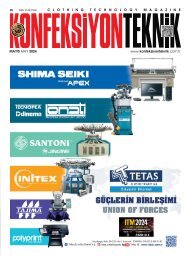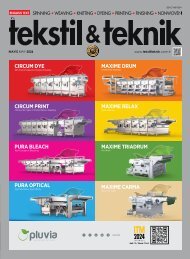SleepTech Magazine / May - June 2017
Create successful ePaper yourself
Turn your PDF publications into a flip-book with our unique Google optimized e-Paper software.
148<br />
Environmental implications<br />
TDI is a confirmed carcinogen. Its<br />
emission is closely monitored by<br />
the authorities. TDI tape detectors<br />
are installed around the factories<br />
it is produced. To minimize the<br />
emission of TDI, most of the process<br />
equipment is shielded.<br />
Like many reactive chemicals, “TDI<br />
products” can create hazards if<br />
handled carelessly. When used<br />
in accordance with current regulations<br />
and industry practices, TDI<br />
can be used safely. Engineering<br />
controls, personal protective<br />
equipment, and long-established<br />
workplace practices are widely<br />
used throughout the industry to<br />
protect workers and the public.<br />
Traditionally CFC (chlorinated fluorocarbons)<br />
based solvents were<br />
used as blowing agents. In the<br />
late 80’s, the ozone layer depletion<br />
effect of CFC based chemical<br />
was established. The use of CFC<br />
was gradually banned. Methylene<br />
chloride, which is inert to ozone, is<br />
used as a substitute for CFC.<br />
Lots of “offcuts” are generated in<br />
the foam cutting process. They are<br />
collected and sent to the associated<br />
recycle plant to produce a<br />
lower grade flexible foam. This<br />
type of foam is widely used in the<br />
production of carpet backings and<br />
packing materials. By this way the<br />
net amount of waste produced in<br />
the process can be minimized.<br />
TDI should only be handled by<br />
knowledgeable, well-trained<br />
personnel who thoroughly understand<br />
the hazards associated with

















